To realize the original intention of the crypto world and establish a safe and ethical digital natural environment, it seems that at this stage, we need a dual-driven approach of technology and mechanisms, along with a composable new defense system.
Written by: Brook
Translated by: Elaine & Sissi & Leia, TEAO
The chaos and lack of innovation in the crypto world raise the question: Are we making substantial progress towards an ideal future? The preface of "The Protocol Revolution and DigiLaw Engineering" explores the essence of the crypto world, the bottlenecks in its development, and the infinite possibilities for future construction from a systematic perspective, providing important insights for understanding the true nature of this new planet.
How to realize the original intention of the crypto world and maintain a safe and ethical development environment? Although the crypto world is gradually moving forward, it is still in its early stages of development, and many orders are still being established. Newcomers who rashly enter often end up with "loss of both people and wealth." When the existing infrastructure cannot adequately support the crypto world's original intention of decentralization, can we collaborate with traditional regulatory agencies and the community to establish a mechanism that can spontaneously monitor and compress the space for wrongdoing, building an "immune system" for the crypto world to comprehensively purify its development environment? At the same time, can we also provide ordinary people caught in it with a global perspective to better understand the overall development of the crypto world?
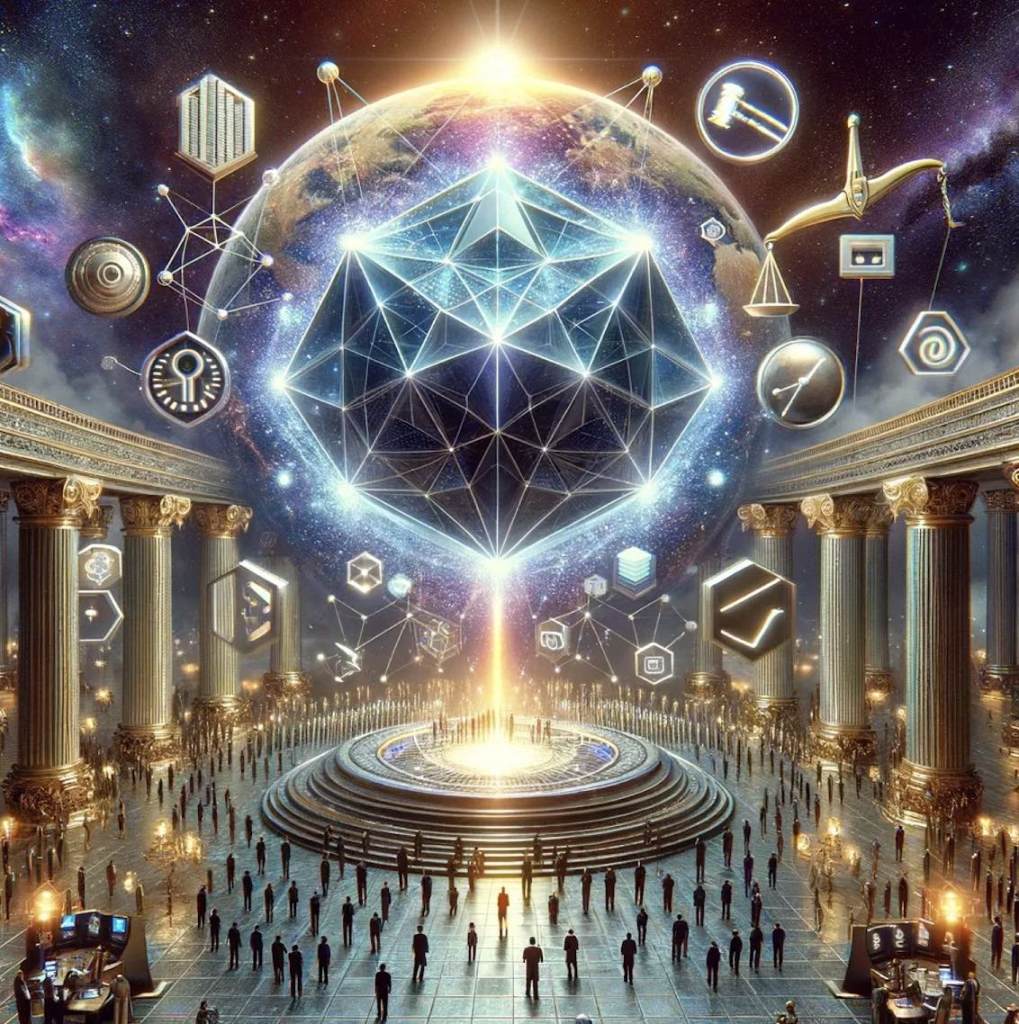
Technology and Mechanisms: Dual-Driven Future of the Crypto World
To realize the original intention of the crypto world and break the existing predicament, especially to dismantle the roots of "wrongdoing," we must rely on a dual-driven approach of "technology" and "mechanisms."
"We are no longer early to crypto." Vitalik has stated that the rapid development of Ethereum and Layer 2 solutions, particularly in terms of reduced fees, increased transaction speeds, and enhanced security, marks that crypto is moving towards a more mature stage. Indeed, over the past decade since the birth of Bitcoin, technology builders focused on coding have made significant contributions to the continuous development of the crypto world. Technology is undoubtedly the core engine for exploring the "endless future" of the crypto world.
However, "We are early to crypto being usable." Why has crypto not achieved widespread adoption? In addition to the need for improvements in friendliness and usability, an important reason is that our research and application in "mechanism design and evolution for the DigiLaw ecosystem" lag far behind the development of crypto technology. Whether the vast territory opened up by technology will yield "flowers" or bear "bad fruits" depends on whether there are sufficiently sophisticated mechanisms to effectively guide and regulate. The various chaotic phenomena in the crypto world currently reflect that our mechanism design is still not sophisticated enough, leaving ample opportunities for wrongdoing, which is undoubtedly a major obstacle to the popularization and adoption of crypto.
To quickly move towards the next billion users, we urgently need to enhance the overall ethics and security level of the DigiLaw ecosystem. However, this is no easy task.
DigiLaw Ecosystem: A New "Species"
The "DigiLaw ecosystem" is an unprecedented new "species" in human history. DigiLaw, as a set of rules designed to achieve specific goals, enables participants to collaborate or compete within the framework of these rules, thereby constructing an open and dynamically self-evolving complex system (referred to as the "DigiLaw ecosystem" in this book). Unlike "dead" (mechanistic) complex engineering systems such as chips, airplanes, and bridges, the DigiLaw ecosystem is more akin to "living" (adaptive) complex adaptive systems like natural ecosystems, global climates, and immune systems. It encompasses not only micro-level interactions but also emergent phenomena from micro to macro levels.
It should be noted that "mechanistic" and "adaptive" are not two completely opposing states; they exist at opposite ends of the same spectrum. Overall, the crypto protocol ecosystem leans more towards an "adaptive" state, but current mechanism research is still insufficient to support the construction and sustainable operation of a "completely adaptive" system.
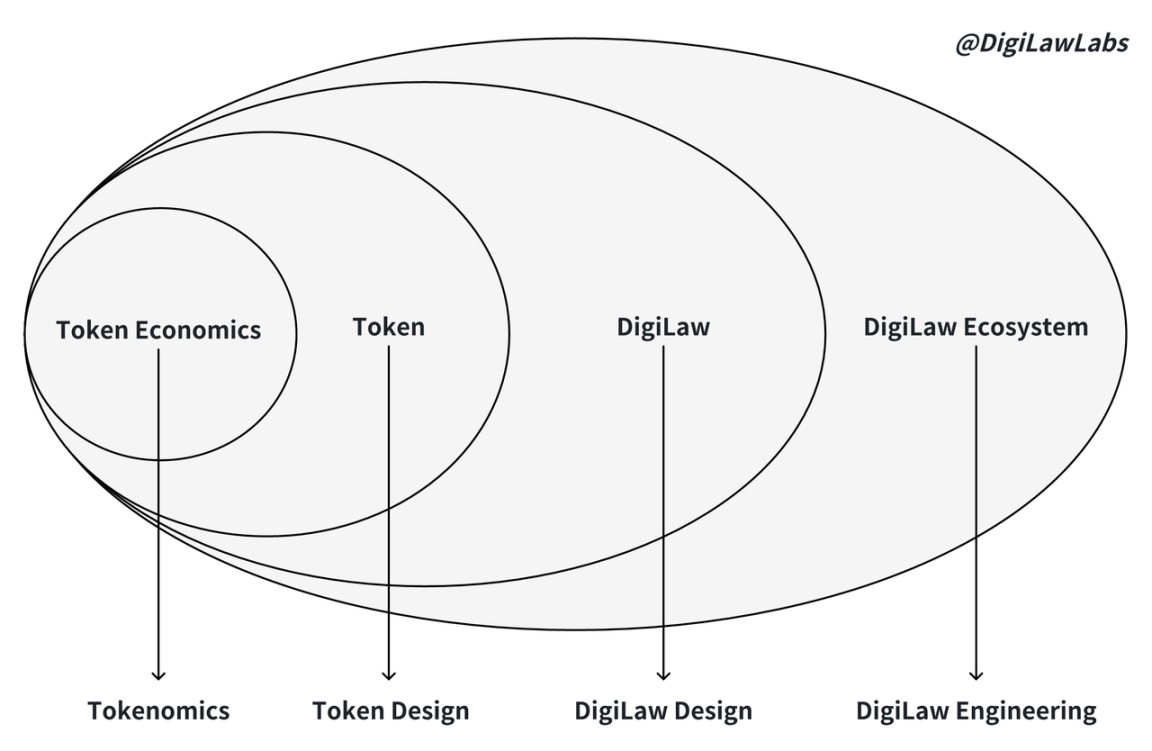
The design and evolution of such "living systems" present a new world-class challenge. The design of token economies alone involves Nobel Prize-level challenges such as reverse games and incentive compatibility. Moreover, the resolution of these issues should elevate to the design of tokens, DigiLaw, and even the entire DigiLaw ecosystem (as shown in the diagram above). From certain dimensions, the difficulty is comparable to advanced chip design, rocket and airplane design, automotive design, and skyscraper design, so we cannot rely solely on "Model-Based System Engineering (MBSE)" methods that originated in these "dead" systems. We need to further upgrade to "Agent-Based System Engineering (ABSE)" methods suitable for living systems with emergent phenomena, to understand, design, and model the behaviors at various levels of the DigiLaw ecosystem's entire lifecycle.
Additionally, "living systems" are not only a design challenge; their evolution also faces significant hurdles. How can we minimize artificial governance? Can we build a comprehensive self-regulating system that dynamically adjusts parameters and mechanisms based on changes in the external environment and internal operating conditions? Can we even leverage powerful AI in the future to achieve the self-adaptation of "living" systems?
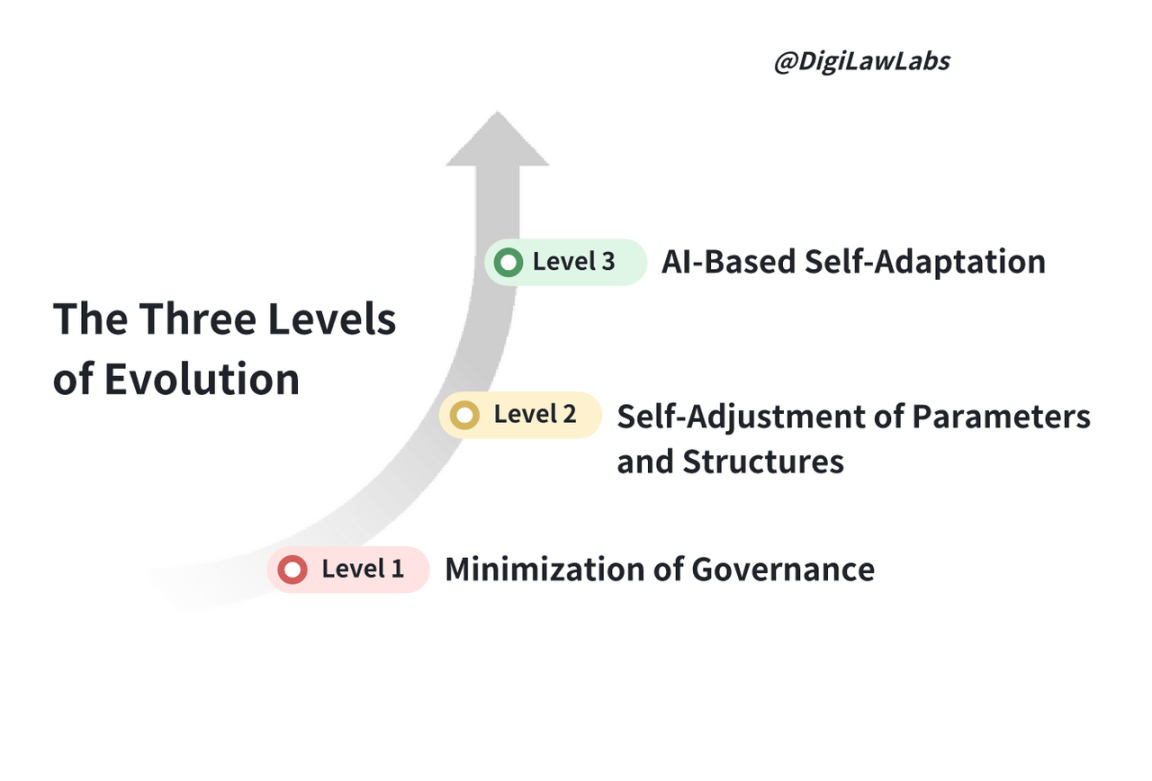
DigiLaw Engineers: The Rise of a New Type of Talent
From successful protocols like Ethereum, AAVE, and Compound that have navigated through bull and bear markets, we can easily see that a commonality among these protocols is the significant time and effort invested in mechanism design and evolution.
Similar to technical security audits, how to determine whether a project is trustworthy? In addition to examining whether it has conducted compliant code security audits at the technical level, we should also pay attention to whether DigiLaw engineers are involved in designing and continuously optimizing the mechanism structure and parameter adjustments of its ecosystem. If so, this at least demonstrates that the project team places sufficient importance on ethics and sustainability, respects the property safety of every participant, and carefully designs its mechanisms based on the operational laws of the ecosystem.
(Note: In the field of Token Engineering, such talents are often referred to as "token engineers." This term is indeed distinctive, novel, and clearly directed. I have also been oscillating between "token engineer" and "DigiLaw engineer." However, for example, protocols like AAVE and Compound, as highly automated ecosystems, have their economic mechanism's parameter operations (such as adjustments to key parameters like collateral ratios and liquidation ratios in core lending operations) significantly affecting the security and efficiency of the entire crypto protocol ecosystem. Yet these issues are unrelated to their native tokens and are key leverage points for the robust and efficient upward development of the Compound protocol today. Compared to "tokens," "DigiLaw" is a more comprehensive proposition. I worry that the term "token engineer" may lead to misunderstandings, implying that the role of such talents is solely focused on "tokens." In contrast, "DigiLaw engineer" more accurately reflects the essence of their work—designing and evolving transparent and immutable rules in the digital world. Therefore, I choose the term "DigiLaw engineer" as a 2.0 version of "token engineer.")
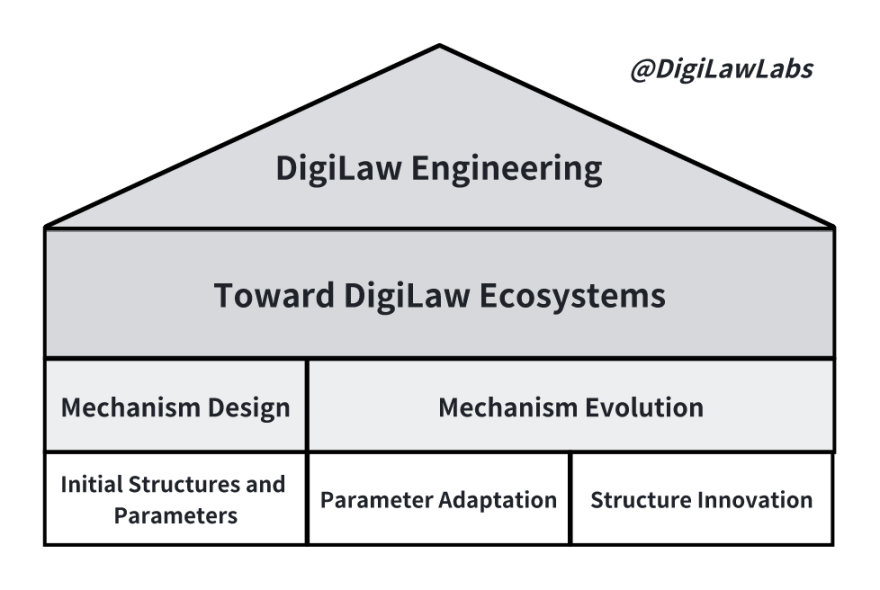
However, the current emphasis on DigiLaw engineers in the crypto world is far from sufficient. Although organizations like TokenEngineeringCommons have been continuously promoting the development of the token engineering field and have achieved significant results, the concept and methods of "Token Engineering" have not yet been widely popularized and applied. Many project teams, investors, and others still remain at the "Tokenomics" level, with little knowledge of "Token Engineering." This reflects, to some extent, that "We are still VERY early" in the research on the mechanism design and evolution of the DigiLaw ecosystem, not only in terms of theoretical and practical deficiencies but also in the lack of professional talent.
For the crypto world to further break through the bottlenecks in security and efficiency, we need to further explore the potential and value of DigiLaw engineers.
Technology is the pioneer of the unknown, while mechanisms are the guardians of vast territories. Without the collaborative drive of both, it is challenging to create a balanced, robust, and anti-fragile DigiLaw ecosystem. The ultimate ideal state is that the development of "technology" and "mechanisms" is sufficient to support the self-security defense and automatic efficiency optimization of the DigiLaw ecosystem's inherent nature without any human intervention.
However, the iterative development of technology and the cultivation of DigiLaw engineer talent are not achieved overnight. When the dual drivers cannot fully support the original intention of the crypto world, we still need the collaborative effort of "external artificial defenses" to jointly safeguard the ethics and security of the crypto world.
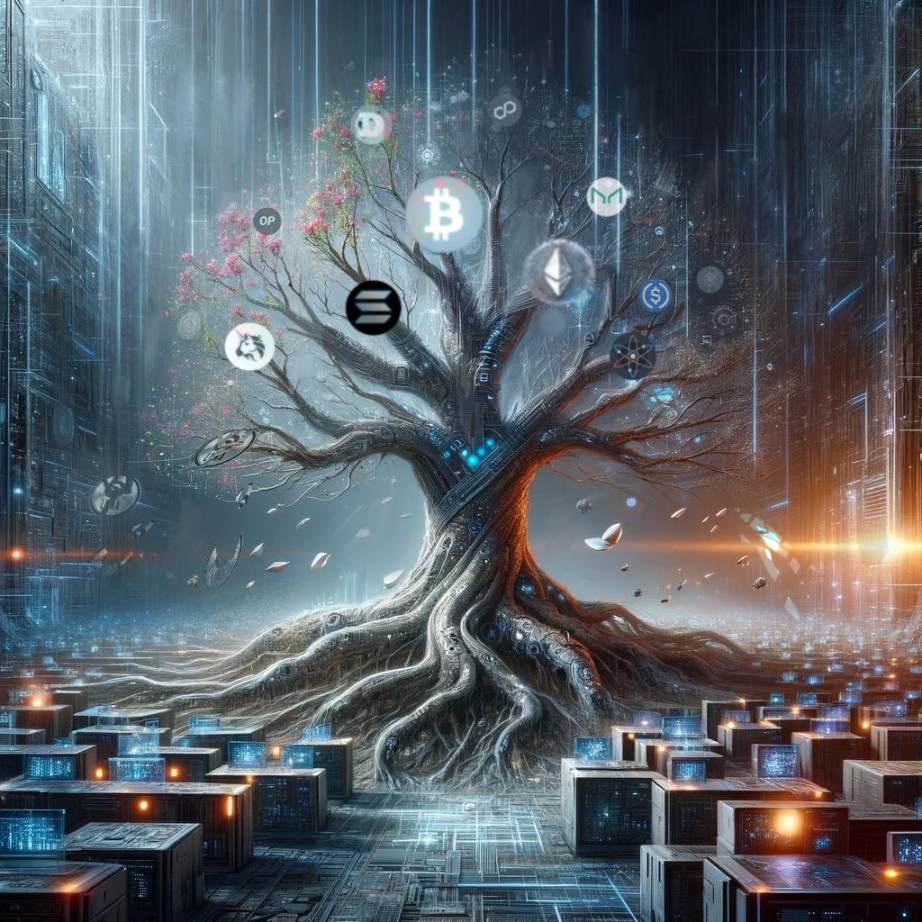
New Defense System: Co-Building the Ethics and Security of the Crypto World with Technology and Mechanisms
The crypto world urgently needs to establish a "new defense system" to combat risks. It is highly likely that the crypto world will remain in a mixed state of "centralization" and "decentralization" for some time to come. The "mix" here has two layers of meaning: first, the "decentralization" of DigiLaw itself is a gradual process; second, the degree of "decentralization" across the end-to-end full cycle of DigiLaw varies, for example, although some DeFi protocols are highly decentralized, they still rely on centralized infrastructure services during implementation, and the apps built on top of the protocols may also be centralized.
In such a hybrid system, the defense system should also be composable. The ultimate ideal state is that the community completes the "decentralized" part of self-governance from the bottom up, while traditional institutions complete the "centralized" part of regulation from the top down. Currently, the regulation by traditional institutions such as the government is accelerating, which belongs to external artificial defenses. Although this regulation can indeed compress certain spaces for wrongdoing, it may also limit the development of "decentralization." By leveraging technology and tools, constructing a community-based DigiLaw self-regulation system can suppress the emergence of "evil" and systemic risks from the inside out and from the bottom up. This internal artificial defense mechanism can more flexibly address the "wrongdoing" challenges faced by the crypto world, while also aligning with the path of achieving the original intention of the crypto world through decentralization.
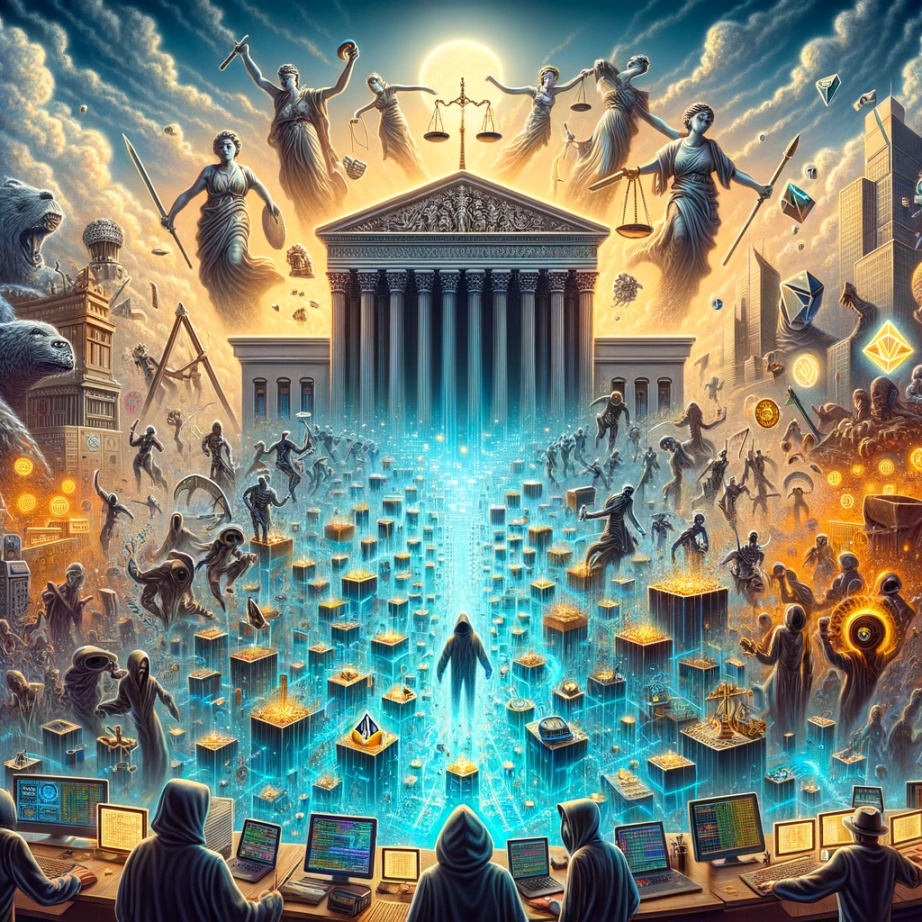
Conclusion: The Synergistic Drive of Technology, Mechanisms, and Defense Systems
Therefore, to realize the original intention of the crypto world and establish a safe and ethical digital natural environment, it seems that at this stage, we need at least a dual-driven approach of technology and mechanisms, along with a composable new defense system. These three elements may not be exhaustive, but they are key to breaking through the bottlenecks in the development of the crypto world.
免责声明:本文章仅代表作者个人观点,不代表本平台的立场和观点。本文章仅供信息分享,不构成对任何人的任何投资建议。用户与作者之间的任何争议,与本平台无关。如网页中刊载的文章或图片涉及侵权,请提供相关的权利证明和身份证明发送邮件到support@aicoin.com,本平台相关工作人员将会进行核查。




